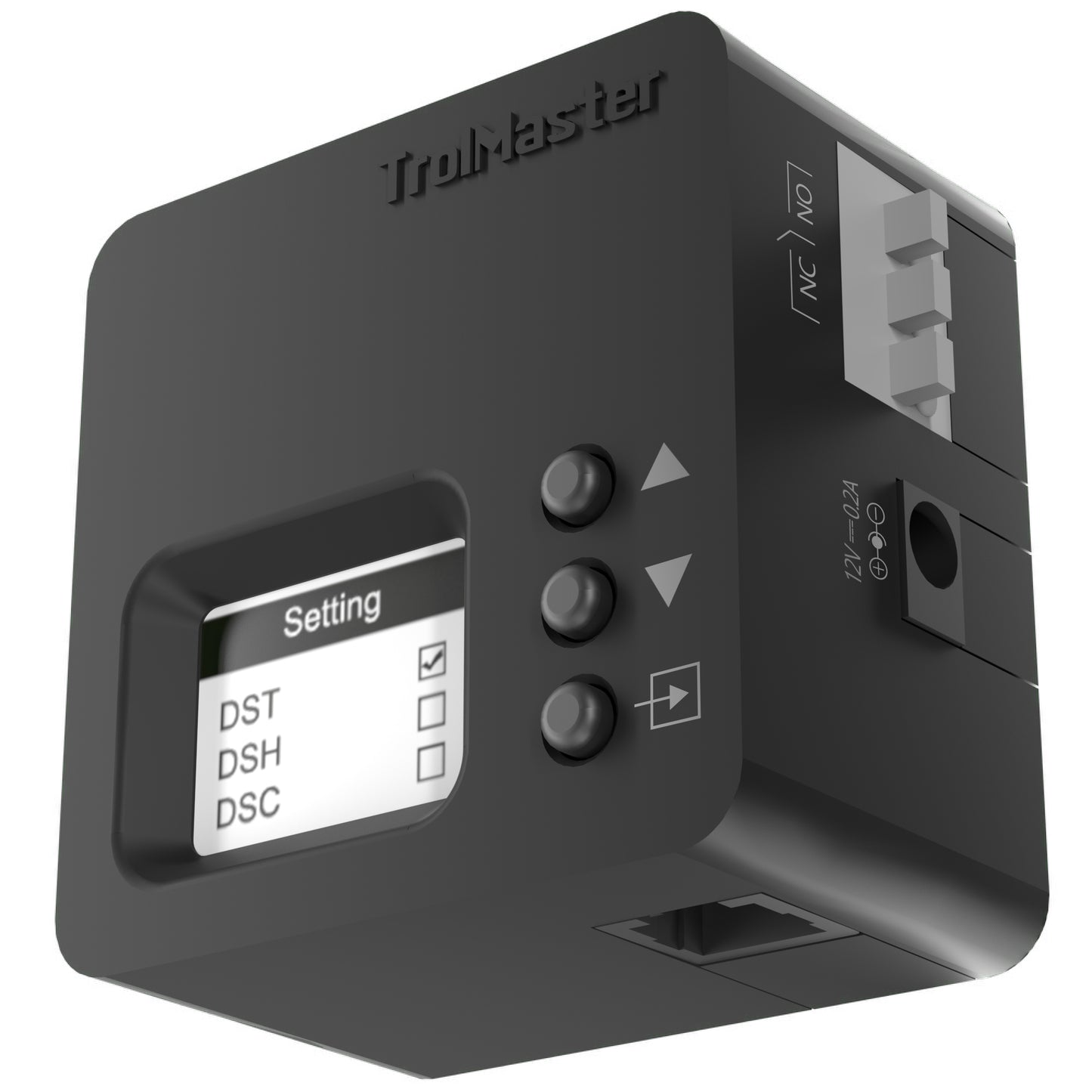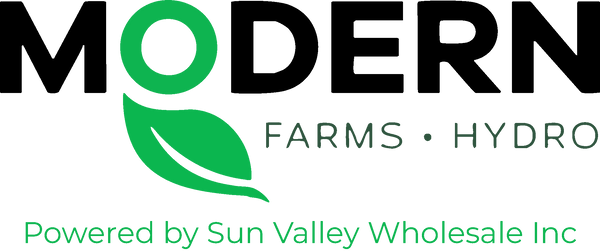TrolMaster
Dry Contact Station Single Pack with cable set
Dry Contact Station Single Pack with cable set
Low stock: 4 left
Couldn't load pickup availability
Payment options
- Fast Delivery
- Easy Returns
- Secure Checkout
Description
Description
The TrolMaster Dry Contact Station module provides a simple and flexible solution to user’s who want to connect & control devices to the Hydro-X using a “dry-contact” or relay to activate the device. Some equipment requires either normally open or normally closed contact closure in order to activate the equipment. The DSD-1 is the product that you need to control those types of devices. The DSD-1 plugs into a standard Nema 120 volt 15/20-amp power outlet to provide operating power to the DSD-1 circuitry. Then the user can use any voltage (up to 240 volts @ 10-amps) to connect their control voltage from their equipment to the common, normally open and/or normally closed contacts on the DSD-1. Almost any device that requires a “dry-contact” or relay to activate will work with the DSD-1. The DSD-1 can be configured to work as the other Trolmaster power modules work. The DSD-1 connects into the “devices” line on the Hydro-X and can be set to control an almost infinite number and types of devices such as: lighting contactors, light deprivation curtains, pump contactors, temperature devices, humidity devices, CO2 devices.
The TrolMaster Dry Contact Station is a pivotal component in advanced automation and control systems. Tailored for compatibility with a variety of devices, this station facilitates seamless integration of your equipment, allowing you to achieve precise control and monitoring in environments ranging from hydroponics to industrial automation.
Key Features:
Dry Contact Technology: The station employs dry contact technology, allowing it to interface with a wide array of devices. Dry contacts are essentially electrical contacts that are not connected to any voltage source, making them versatile for use with different types of equipment.
Versatile Connectivity: Designed with versatility in mind, the Dry Contact Station can interface with equipment that relies on dry contacts for control or monitoring. This includes pumps, fans, heaters, or any device that utilizes simple electrical signaling for activation or deactivation.
Compatibility: The station is compatible with a range of control systems, making it suitable for integration into diverse setups. Whether you're managing a hydroponic system, industrial machinery, or home automation, the Dry Contact Station provides a bridge between your control system and the devices you want to manage.
Multiple Channels: Depending on the specific model, the Dry Contact Station may feature multiple channels. Each channel acts as an independent interface, allowing you to control and monitor different devices simultaneously.
Plug-and-Play Setup: With a user-friendly design, the Dry Contact Station typically offers a plug-and-play setup. This simplifies the installation process, making it accessible for users with varying levels of technical expertise.
LED Indicators: Many models come equipped with LED indicators, providing visual feedback on the status of each channel. This makes it easy to identify which devices are currently active or inactive at a glance.
Secure Wiring: The station is designed with secure wiring connections, ensuring stable and reliable communication with connected devices. Properly secured wiring minimizes the risk of connectivity issues and contributes to the overall reliability of the automation system.
Remote Monitoring and Control: Depending on the broader automation system in use, the Dry Contact Station may support remote monitoring and control. This feature is particularly valuable for users who need to manage their systems from a distance, enhancing convenience and efficiency.
Durable Construction: Constructed with durability in mind, the Dry Contact Station is built to withstand the demands of various environments. This is especially important in settings where the equipment may be exposed to fluctuations in temperature, humidity, or other challenging conditions.
Expandability: Some models may offer expandability options, allowing users to scale up their automation systems. This is beneficial for users who anticipate the need to add more devices or channels to their control setup in the future.
Share

INFORMATION QUESTIONS
FREQUENTLY ASKED QUESTIONS
What is Hydroponics?
Hydroponics is the science of growing plants without soil. The plants thrive on the nutrient-water solution alone. The growing medium merely acts as a support for the plants and their root systems while the solution passes freely. The growing medium, if any, is totally inert.
What types of plants grow best hydroponically?
Anything can be grown hydroponically, but some plants prove to be more space efficient. Some plants we suggest are tomatoes, sweet peppers, hot chilies, lettuce, spinach, squash, cucumbers, broccoli, beans, snow peas, herbs and flowers of all types.
Can you REALLY get better yields/quicker growth?
Absolutely. The plants, when receiving everything they need, tend to be healthier, faster growing and generally more productive. You can expect 30% faster growth with many crops.
What are the watering cycle timelines hydroponic systems?
Once the reservoir is filled with nutrients, it is time to put your hydro system to work! The ease of hydroponics is automation – automation is achieved by putting the pump on a timer according to your watering needs. The watering cycle depends on growth stage, growing medium and hydroponic system. In an ebb and flow or drip system with rockwool as the medium, seedlings, clones and plants in the early vegetative stage require watering only once a day for 15-30 minutes (twice a day for higher temps). Mature, flowering and fruiting plants require a heavier feed and can be fed once a day for 30 minutes (twice a day for higher temps). Typically soiless mixes and coco fiber can be watered for about 15 minutes twice a day, and can be adjusted for heavier feeding during the flowering and fruiting stage or higher temps. ViaStone, Hydroton, Grow Rocks, and Silicate mediums need to be watered more frequently – a constant drip for drip systems, and about 15-30 minutes every 3 hours for ebb and flow systems and can be adjusted for heavier feeding during the flowering and fruiting stage or higher temps. Aeroponic systems require frequent watering cycles; 30-60 seconds every few minutes or a constant spray.
What do I need to test pH? How do I test pH?
pH has a range from 0 (acidic) – 14 (alkaline), with 7 being neutral. A proper hydroponic pH range is between 5.5 to 6.2 for most hydroponic crops. For specific crop pH, check out our Plant Guide. pH must remain within the proper range for good plant health, disease resistance, and proper nutrient uptake. pH is maintained by adding pH Up and pH Down to the nutrient solution. For more information, see the Testssection of our site.
How will the flavor compare to my outdoor grown, organic produce?
The taste may be even better! This is simply due to the fact that the hydroponically grown plants are getting everything they need, when they need it. Don’t be fooled by “hot house” produce grown commercially. The grower’s primary concern is shipability and storage, not flavor. When you grow your own vegetables at home, you can expect nothing less than excellent results. Plus, hydroponically grown produce has the added benefit of a longer shelf life.

